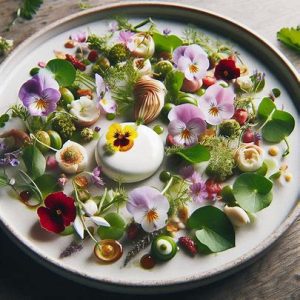 Modern chefs constantly push boundaries by experimenting with unconventional ingredients. Whether it’s edible flowers, rare fungi, or fermented elements, these components elevate flavors and textures in unexpected ways. Take, for example, the growing use of botanicals in cuisine. Some chefs even explore ingredients like DOPEBOO amanita, known for its distinctive properties and earthy taste.
Modern chefs constantly push boundaries by experimenting with unconventional ingredients. Whether it’s edible flowers, rare fungi, or fermented elements, these components elevate flavors and textures in unexpected ways. Take, for example, the growing use of botanicals in cuisine. Some chefs even explore ingredients like DOPEBOO amanita, known for its distinctive properties and earthy taste.
The Evolution of Unconventional Ingredients
Throughout history, culinary trends have been shaped by cultural exchanges, scientific discoveries, and an evolving appreciation for diverse flavors. What was once considered strange—such as umami-rich seaweed in Western dishes or fermented fish sauce in European cuisine—has now become commonplace.
Today, chefs embrace unique ingredients not only for their flavors but also for their health benefits and sustainability. They incorporate foraged herbs, edible insects, and molecular gastronomy elements to create unforgettable dining experiences.
Botanicals and Wild Herbs in Fine Dining
Botanicals have gained prominence in modern gastronomy. Lavender, hibiscus, and elderflower are now widely used in sauces, dressings, and desserts. These floral notes add depth to dishes, balancing sweetness and acidity.
Wild herbs such as sorrel, woodruff, and lemon balm bring a natural vibrancy to gourmet dishes. Chefs forage these elements to craft unique salads, soups, and even cocktail infusions.
Fermented and Aged Ingredients
Fermentation enhances umami flavors while also improving gut health. Ingredients like miso, kimchi, and aged soy sauce are now being incorporated into unexpected dishes beyond their traditional roots.
Some chefs even experiment with house-made fermented elements like black garlic or koji to create complex layers of flavor. The aging process intensifies their taste, making them perfect additions to gourmet plates.
Edible Flowers and Exotic Fruits
Edible flowers such as nasturtiums, borage, and violets are no longer just garnishes. These delicate blooms introduce subtle flavors and aesthetic appeal to both savory and sweet dishes.
Meanwhile, exotic fruits like yuzu, rambutan, and black sapote provide chefs with exciting new ways to play with acidity, sweetness, and texture.
Unexpected Protein Sources
Alternative proteins have made their way onto high-end menus. From crickets to lab-grown meats, chefs are redefining how we perceive protein consumption.
These ingredients offer not only sustainability but also new textural experiences. Dishes featuring cricket flour in baked goods or seared lion’s mane mushrooms as meat substitutes demonstrate the culinary world’s innovation.
READ ALSO: A Guide to Dining and Exploring Culinary Delights
The Future of Experimental Cuisine
The culinary landscape will continue to evolve as chefs discover new ingredients and techniques. As food science advances, so will the possibilities for flavor combinations and sustainable cooking practices.
Whether through botanical infusions, aged elements, or edible insects, modern cooking embraces creativity like never before. The next time you dine at a gourmet restaurant, you might just find yourself tasting something completely unexpected—and loving it.

